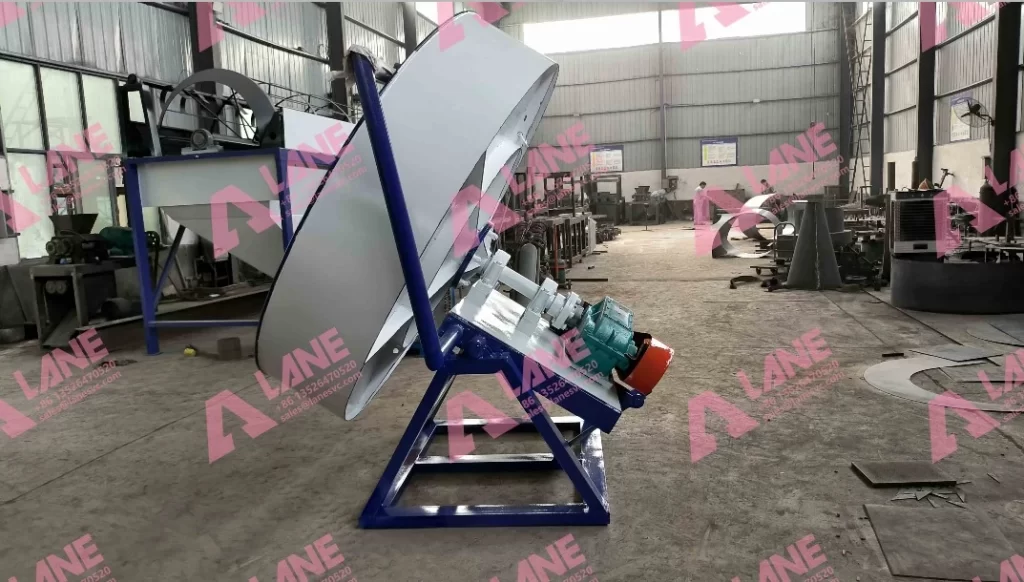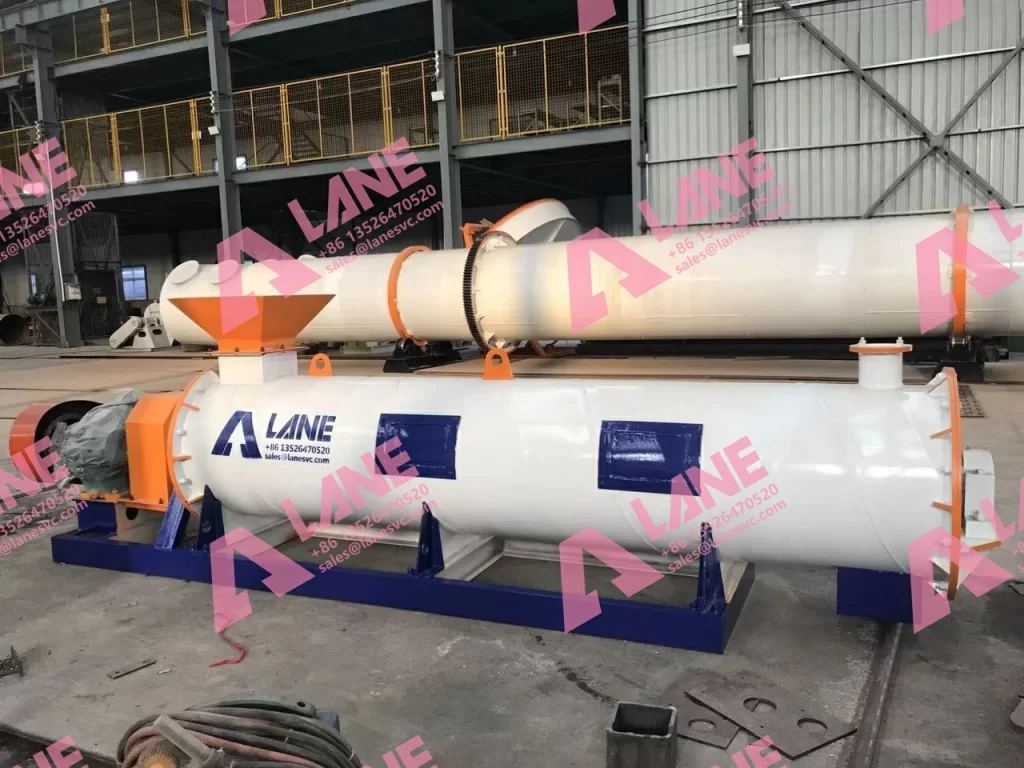Introduction
In modern sustainable agriculture, organic fertilizers play an indispensable role. The key to converting powdered organic waste into well-formed and highly efficient fertilizers lies in the core equipment – the organic fertilizer granulator machine.
An efficient and reliable organic fertilizer granulator machine not only improves the quality of the fertilizer but also enables the recycling of resources.
This article will delve into the production process of organic fertilizers and compare the characteristics and applicability of four mainstream organic fertilizer granulator machines.
A complete organic fertilizer production line is a systematic project, which mainly consists of the following stages:
Fermentation and Composting: This is the first step in production. Mix raw materials such as livestock manure, straw, and sludge with a fermentation agent and carry out aerobic fermentation through trough or pile-type composting. This process can kill pathogens and weed seeds, break down large-molecule organic substances, and convert them into stable humus.
Crushing and ingredient preparation: The fermented raw materials are processed by a crusher to ensure uniform particle size. Then, based on the nutritional requirements of the target product, they are precisely mixed with other elements (such as nitrogen, phosphorus, potassium, or functional microbial preparations).
Core granulation: This is the core step of the entire production line. The powdered materials after mixing are sent into the organic fertilizer granulator machine, where they are pressed into spherical particles of a certain strength and regularity through specific mechanical forces.
Drying and Cooling: The particles freshly discharged from the granulator machine have high moisture content and low strength. They need to be dried using a dryer to remove the excess moisture, and then cooled to room temperature to maintain the stability and hardness of the particles.
Screening and packaging: The cooled particles are sorted by a drum screen. The qualified products proceed to the subsequent coating (optional) and packaging processes, while the finer or larger particles are returned to the crushing or granulation processes for further processing.
This production line achieves the harmless treatment, reduction, and resource utilization of organic waste. The granular organic fertilizer produced by it has significant advantages such as balanced nutrition, easy transportation and storage, long-lasting effect, and convenient application. It is an ideal choice for developing ecological agriculture.
Selecting the appropriate organic fertilizer granulator machine is crucial for ensuring product quality and yield.
The following details the differences and similarities in raw material applicability among four types of granulator machines (disc granulator machine, stirring pin granulator machine, rotary drum granulator machine, and two-in-one granulator machine).
The disc granulator machine is usually suitable for medium and small-scale production needs and has flexible output adjustment. The particles produced by it have the highest sphericality and the smoothest surface. It is mainly applicable to raw materials with good viscosity, such as fermented livestock manure, peat moss and sludge. They have a relatively low requirement for the moisture content of the raw materials, usually controlled at around 25%-30%. The granulation process mainly relies on atomizing adhesives (such as water or paste) to bond the powder together.

Organic fertilizer granulator machine
Stirring pin granulator machine is suitable for medium to high production volumes. It produces slightly rough, irregular spherical particles. This machine has strong adaptability to various raw materials, especially excelling in handling materials with high fiber content, such as straw, mushroom residue, and household waste. It has a high requirement for the moisture content of the raw materials and can directly process wet materials with a moisture content of 30% – 40%. Its working principle is to utilize the heat generated by the friction between the high-speed rotating teeth and the materials, causing the materials to adhere and form spherical particles.

The rotary drum granulator machine is renowned for its high production capacity and continuous operation capability, and is suitable for large-scale production. Although the produced granules are spherical in shape, their sizes are usually not uniform and require a screening system for classification. Various organic fertilizer raw materials are applicable to this equipment, making it particularly suitable for large-scale continuous production lines. It requires moderate moisture content of the raw materials, approximately between 30% and 35%. This equipment mainly relies on the continuous rolling action of the drum, using the material’s own stickiness to gradually compact it into granules.
This granulator machine integrates two granulation functions and is suitable for small and medium-scale production as well as scenarios requiring multi-functional applications. It combines the crushing and fine-grinding effect of the stirring teeth with the rounding and polishing effect of the rotating drum, producing spherical particles. This design makes it highly adaptable to various raw materials and can effectively handle viscous and fibrous materials. It has a wide range of requirements for the moisture content of the raw materials and integrates the advantages of both the stirring teeth and the rotating drum technologies, and has a high tolerance for moisture fluctuations.

Similarities: All types of organic fertilizer granulators are designed to convert powdered organic raw materials into granules. They all require the raw materials to undergo sufficient fermentation and maturation to ensure the safety and stability of the products. At the same time, the fineness of the raw materials is a common prerequisite that affects the granulation rate and particle smoothness of all models. Differences:
Output and shape: The rotary granulator focuses on output, the disc granulator pays attention to shape, the agitated granulator excels in raw material adaptability, while the two-in-one granulator demonstrates outstanding performance in flexibility and versatility.
Raw materials and moisture content: This is the most crucial differentiating factor when choosing an organic fertilizer granulator. The disc-type granulator has the strictest requirements for the viscosity and moisture content of the raw materials; the agitated granulator can handle high-moisture and high-fiber raw materials in a “dry-wet alternate” manner; the rotary granulator lies between the two; and the two-in-one granulator combines the advantages of both.
Characteristics of raw materials to be considered when choosing a granulator
When choosing an appropriate organic fertilizer granulator, in addition to the aforementioned basic factors, a more in-depth analysis of the raw materials is also necessary.
High-fiber raw materials (such as straw, sawdust, and garden waste): The preferred choice for these materials is the mixer-type pelletizer. Its powerful shearing and tearing capabilities can effectively break down the fiber structure and promote material agglomeration. Disc-type and rotary-type pelletizers are prone to “stringing” when processing such raw materials, which makes pelletization difficult.
Low-fiber and high-viscosity raw materials (such as pure livestock and poultry manure and sludge): These are more suitable for use with disc or rotary granulators, which can press out smooth particles by taking advantage of their viscosity.
The self-adhesive and plastic properties of the raw materials:
High-viscosity materials (such as some materials rich in humic acid) can be formed into high-strength particles through the continuous rolling and compaction of a rotary granulator.
For materials with lower viscosity, if a disc granulator is used, adhesives such as bentonite and starch must be added to assist in granulation.
If the raw material pre-treatment (such as crushing and sorting) is not thorough, and contains hard impurities like stones and plastics, it will cause wear and even damage to various organic fertilizer granulators. Among them, the more complex tooth-type granulators and two-in-one granulators are more sensitive to impurities and require stricter pre-treatment.
To sum up, the organic fertilizer granulator is the core of organic fertilizer production, and its selection directly determines the success or failure of the production line. No single organic fertilizer granulator can be applicable to all situations; the best choice always depends on your specific raw material characteristics, production goals, and product positioning. Fully understanding your raw materials and deeply grasping the working principle of each granulator is the key to choosing the most effective “green engine” for your enterprise.